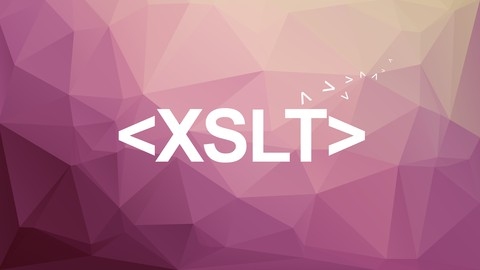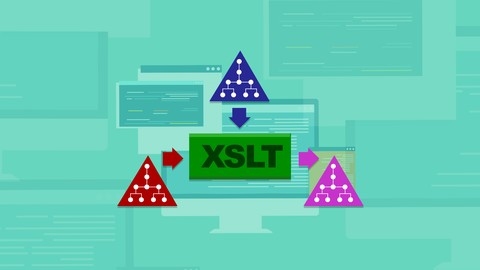XSLT (Extensible Stylesheet Language Transformations), XPath (XML Path Language), and XQuery are powerful technologies used to transform and query XML data.
They are essential tools for developers working with web services, data integration, and content management systems.
By mastering these technologies, you can efficiently manipulate XML data, convert it into different formats like HTML or JSON, and extract specific information from complex XML structures.
This opens doors to building dynamic websites, integrating data from various sources, and automating data processing tasks.
Finding a comprehensive and well-structured course to learn XSLT, XPath, and XQuery can be challenging.
You want a course that covers the fundamentals thoroughly, provides practical examples, and equips you with the skills to apply these technologies in real-world scenarios.
With numerous online courses available, it’s crucial to choose one that suits your learning style and provides a solid foundation in these essential technologies.
For the best XSLT course overall on Udemy, we recommend XSLT XPATH and XQuery Fundamentals.
This course provides a comprehensive introduction to all three technologies, starting with the basics and gradually progressing to more advanced concepts.
It covers topics like creating XSL documents, transforming XML into HTML, mastering XPath expressions for data querying, and understanding the fundamentals of XQuery.
With clear explanations, hands-on exercises, and a practical use case, this course is an excellent choice for beginners and those seeking to solidify their understanding of XSLT, XPath, and XQuery.
While XSLT XPATH and XQuery Fundamentals is our top pick, there are other excellent courses available on Udemy that cater to different learning preferences and focus areas.
Whether you’re interested in specific applications of XSLT or want to explore related technologies like Excel integration, we have you covered.
Keep reading to discover more options and find the perfect XSLT course to suit your needs.
XSLT XPATH and XQuery Fundamentals
This course provides a solid foundation in XSLT, XPath, and XQuery, empowering you to confidently work with these technologies.
You start by installing Eclipse and setting up your environment before diving into the fundamentals of XSLT.
You learn how to create XSL documents, transform XML data into HTML, and work with the node tree.
You also explore techniques like outputting HTML, creating tables, sorting data, and extracting attribute values using XSLT.
You then move on to master XPath, a powerful language for navigating and querying XML.
Through hands-on experience, you learn to address nodes, compare values, calculate totals, extract substrings, and translate text.
The course also presents a practical event management use case, showing how to create XSL transformations for organizer, venue, and participant data, solidifying your understanding of XSLT and XPath in a real-world scenario.
Finally, you delve into the basics of XQuery, a query language for XML data.
You learn about the FLOWR expression, a key component of XQuery that enables you to filter, sort, and manipulate data.
You gain skills in generating HTML from XQuery results, using if-else conditions for decision-making, and working with functions to enhance your query logic.
A final quiz and a bonus lecture round off the course, ensuring you grasp these powerful technologies fully.
Excel XML, XPath and XSLT Workflows
This course begins with the essentials of XML, getting you comfortable with its structure and key components like elements, attributes, and CDATA sections.
You will learn important concepts such as well-formed XML and how to validate it using DTDs and XML schema documents.
This foundation in XML prepares you for understanding its interaction with Excel.
You will then discover how to import and export XML data within Excel, create XML maps, and even import multiple tables from XML data.
You will master the WEBSERVICE function to retrieve data from external sources and harness the power of XPath to navigate and query XML data directly within Excel.
The course will also teach you how to use the FILTERXML function with ENCODEURL for handling URLs and the new CONCAT function for manipulating text within XML.
You will become comfortable with predicates for filtering data and the descendant-or-self axis for moving through XML documents.
Finally, you will explore XSLT stylesheets, a powerful tool for converting XML data into various formats.
You will learn to create new elements and attributes, use functions like xsl-copy-of, xsl-text, and xsl-value-of, and control the flow of your transformations with xsl-if and xsl:choose statements.
You will finish the course by mastering attribute value templates, a powerful technique for customizing the output of your XSLT transformations.
Intro to eXtensible Stylesheet Language Transformations
This course on XSLT starts you off by building a strong understanding of XML.
You’ll learn how to write valid XML, understanding its syntax, how to use elements and attributes, and how to visualize its structure using the XML tree.
Once you have a good grasp of XML, you move on to XPath, a language that lets you navigate and select specific data within XML documents.
You’ll discover how to write path expressions to pinpoint the information you need from complex XML structures.
With a solid understanding of XML and XPath, you then dive into XSLT itself.
The course guides you through creating XSLT documents, working with variables, using conditional testing to control the transformation process, and iterating through node sets to process data efficiently.
You’ll also explore the various built-in XSLT functions that provide flexibility and power in transforming XML data.
Throughout the course, quizzes reinforce your understanding of XML, XPath, and XSLT.
You’ll be able to test your knowledge and ensure you’re grasping the core concepts.
The course wraps up with a recap, providing you with all the resources and files used throughout the lessons, so you have everything you need to continue practicing and applying your newly acquired XSLT skills.
Practical Transformation Using XSLT and XPath (5-hour free preview; 24 hours total)
This XSLT course thoroughly explains how to transform XML data into different formats, such as HTML, using XSLT and XPath.
It course starts with the basics, explaining how XSL Transformations and the XML Path Language work.
You will get a deep understanding of how data flows through transformations and how to navigate and extract information from XML documents using XPath.
The course then moves on to more complex topics.
You learn about the XSLT processing model, manage XSLT stylesheets, and use advanced techniques like sorting and grouping data.
You’ll become familiar with the XSLT transformation environment and understand stylesheet basics, input, output, and how to generate HTML.
You also learn to work with conditional control instructions, numbering in XSLT, and how to create new nodes in your result tree.
Taught by G. Ken Holman, an expert with decades of experience in XSLT, the course offers a free preview of the first five hours.
You get access to video lectures recorded in February 2008, a complete, updated PDF book released in February 2011, and additional resources like PDF handouts.
The exercises provided will give you practical experience, helping you to solidify your understanding.




